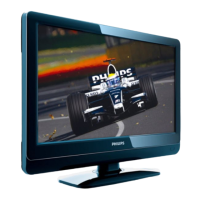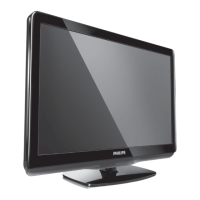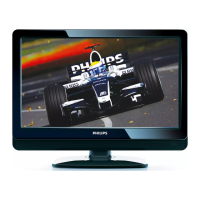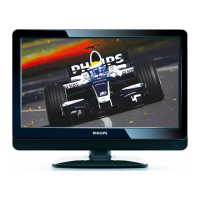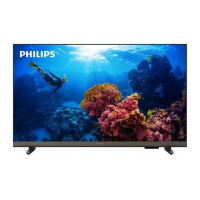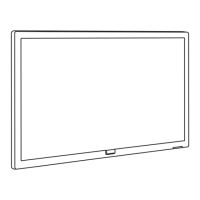Do you have a question about the Philips 19PFL2908H and is the answer not in the manual?
Instructions for inserting AAA batteries into the remote control.
Guide to connecting the TV to power and antenna/cable sources.
How to enter and use the standard Teletext service.
Instructions for accessing and using digital Teletext in the UK.
Steps to turn the television on from standby or off state.
Procedure to turn the TV off or put it into standby mode.
Guide for installing and searching for digital terrestrial TV broadcasts.
Steps for installing and searching for cable TV broadcasts.
Navigating and using the Media Browser screen for file playback.
Configuring playback modes like loop and shuffle for media files.
Adjusting picture settings like Mode, Contrast, Brightness, Sharpness, and Colour.
Configuring advanced picture options including zoom, colour temp, and PC adjustments.
Adjusting volume, equalizer, balance, headphone, sound mode, AVL, and digital out.
Setting up parental controls, menu lock, maturity lock, child lock, and PIN.
Configuring language, parental controls, timers, date/time, sources, and conditional access.
Options for automatic and manual channel scanning, tuning, and network scans.
Adjusting menu timeout and scan encrypted settings.
Features like blue background, audio description, auto TV off, and standby search.
Viewing programme information, options, and schedules via EPG.
Connecting USB, setting timers, and recording programmes via EPG.
Using timeshift for pausing live TV and instant recording.
Accessing and playing back recorded content from the USB drive.
Procedure for updating TV software using a USB flash drive.
Automatic scanning and reboot procedures for software upgrades.
Resolving ghosting, no power, and poor picture quality.
Diagnosing issues with no picture, poor picture, and no sound.
Troubleshooting remote control and input source selection problems.
Resolving recording unavailability and 'USB too slow' errors.
List of resolutions supported when connecting via DVI to HDMI.
Common display modes and resolutions for PC input.
Media file types (movie, music, photo, subtitle) supported via USB.
| mains power | AC 220-240V; 50-60Hz |
|---|---|
| eu energy label power | 18 W |
| annual energy consumption | 26 kW·h |
| standby power consumption | < 0.3W |
| display | LED HD TV |
|---|---|
| diagonal screen size | 19 inch / 48 cm |
| panel resolution | 1366 x 768p |
| aspect ratio | 16:9 |
| brightness | 250 cd/m² |
| dynamic screen contrast | 100, 000:1 |
| number of HDMI connections | 1 |
|---|---|
| number of scarts (RGB/CVBS) | 1 |
| number of AV connections | 1 |
| number of USBs | 1 |
| other connections | Antenna IEC75, Common Interface Plus (CI+), Digital audio out (coaxial), PCin VGA + Audio L/R in, Headphone out |
| box dimensions | 579 x 380 x 120 mm |
|---|---|
| set dimensions | 450 x 296 x 35 mm |
| set dimensions with stand | 450 x 332 x 134 mm |
| product weight | 2.7 kg |
| product weight with stand | 2.9 kg |
| weight including packaging | 3.8 kg |
| compatible wall mount | 75 x 75 mm |


